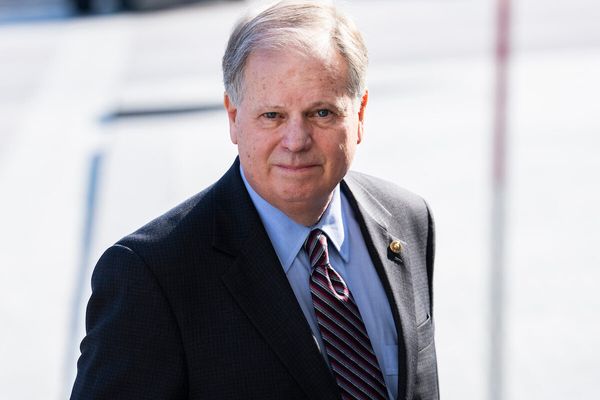The Federal Reserve is expected to lift interest rates to the highest level since 2007 in its intense quest to battle the hottest price surge in four decades, according to the nation’s top economists.
Experts surveyed in Bankrate’s Third-Quarter Economic Indicator poll say policymakers’ key federal funds rate — which acts as a lever for basically all consumer borrowing costs in the economy — will top out at 4.71%, reflecting a target range of 4.5%-4.75%. Rates were last at that level between October and December of 2007, near the start of the financial crisis.
Those moves could also help keep another key borrowing benchmark — the 10-year Treasury yield — at an elevated level a year from now. The average forecast among economists in Bankrate’s poll put the interest rate at 3.79% by September 2023, the highest since 2010.
The 10-year interest rate influences the 30-year fixed-rate mortgage, and a higher yield could mean more expensive home-buying costs will persist into the future. The average rate on the most common home loan has more than doubled since the start of the year and approached 7% in a national Bankrate survey for the week that ended on Sept. 28.
“The good news is that one can enjoy some of the best returns on savings in years, with higher payoffs for those who wisely shop around,” says Mark Hamrick, Bankrate senior economic analyst. “Savers are finally seeing a reset, with more generous returns being paid because of rising rates. With most Americans still living paycheck to paycheck, now is the time to make a commitment.”
What the Fed’s fastest rate hikes in 40 years mean for you
Economists’ estimates are in line with what Fed officials themselves are expecting. Six officials in the U.S. central bank’s September projections penciled in a peak interest rate of 4.5%-4.75%, where policymakers are expected to raise interest rates to in 2023 before holding them at an elevated level to cool inflation.
But the future doesn’t always unfold the way anyone expects — even for the Fed. An equal number of Fed officials also penciled in interest rates of 4.25%-4.5% and 4.75%-5% in 2023, along with one who saw a 3.75%-4% rate, policymakers’ projections show. Bankrate’s survey participants had an even wider range, from a low of 4%-4.25% to a high of 5.75%-6%.
The Fed’s path ultimately depends on what happens with inflation, which has already shown signs of heating up beyond expensive gasoline and energy prices. Rents rose at the fastest pace since April 1986, while services such as medical care, vehicle repair and food away from home skyrocketed by the most since 1982. Falling gasoline prices helped take the edge off headline inflation for the third month, but core prices excluding that volatile category surged 6.3% from a year ago.
Inflation, once deemed transitory because of supply factors associated with the pandemic, has now lingered for longer than any official ever expected. That’s even with a remarkable 3 percentage points worth of rate hikes in just a six-month span, the fastest pace since the early 1980s. Back then, Chair Paul Volcker steered the Fed to lift rates from 14% to about 20%.
The implications for the economy are stark. The Fed has an idea of where interest rates could start to slam the brakes on economic growth — the so-called “neutral rate of interest” — but even then, those estimates are illusive. It is believed to be about 2.5%, but inflation has been more than three times higher than that since the start of the year. Not to mention, the Fed didn’t hike interest rates for the first time after the coronavirus pandemic until March 2022, when inflation had already topped 8.5%.
Facing the prospect that it might’ve waited too long to start taking stimulus away from the economy, officials are having to wait knowing their interest rate decisions take a while to filter through to the rest of the economy. It’s just another layer making the Fed’s job complicated, raising the risk it could do too much.
Methodology
The Third-Quarter 2022 Bankrate Economic Indicator Survey of economists was conducted Sept. 22-29. Survey requests were emailed to economists nationwide, and responses were submitted voluntarily online. Responding were: Ryan Sweet, senior director of economic research, Moody’s Analytics; Yelena Maleyev, economist, KPMG LLP; Odeta Kushi, deputy chief economist, First American Financial Corporation; Lawrence Yun, chief economist, National Association of Realtors; Robert Hughes, senior research faculty, American Institute for Economic Research; Mike Fratantoni, chief economist, Mortgage Bankers Association; Bernard Baumohl, chief global economist, The Economic Outlook Group; Scott Anderson, executive vice president and chief economist, Bank of the West; Bernard Markstein, president and chief economist, Markstein Advisors; Mike Englund, chief economist, Action Economics; John E. Silvia, founder and president, Dynamic Economic Strategies; Robert Frick, corporate economist, Navy Federal Credit Union; Joel Naroff, president, Naroff Economics; and Robert Brusca, chief economist, Fact And Opinion Economics.







